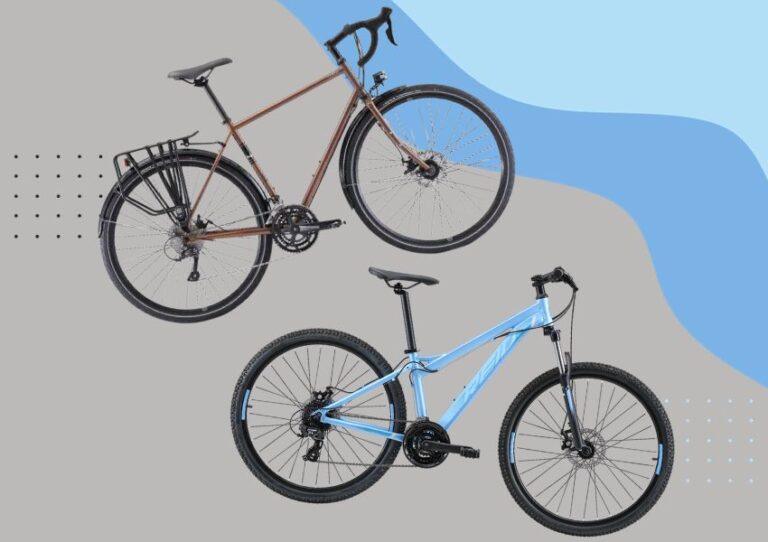The main difference between touring bikes and mountain bikes is that touring bikes are designed for travel or long-distance riding, while mountain bikes are designed for off-road use.
Touring bikes typically have a more relaxed frame geometry, which makes them more comfortable to ride for long distances. They also have wider tires, which provide more traction and cushioning on uneven terrain. Mountain bikes, on the other hand, have a more upright geometry and narrower tires, which makes them better suited for riding on rough terrain.
Mountain bikes also typically have more powerful brakes, which allow you to stop quickly in case of an emergency. They also usually have a suspension system, which helps to absorb the impact of bumps and rocks. Touring bikes typically do not have a suspension system, since they are not designed for off-road use.
Touring Bike vs Mountain Bike A Detailed Comparison
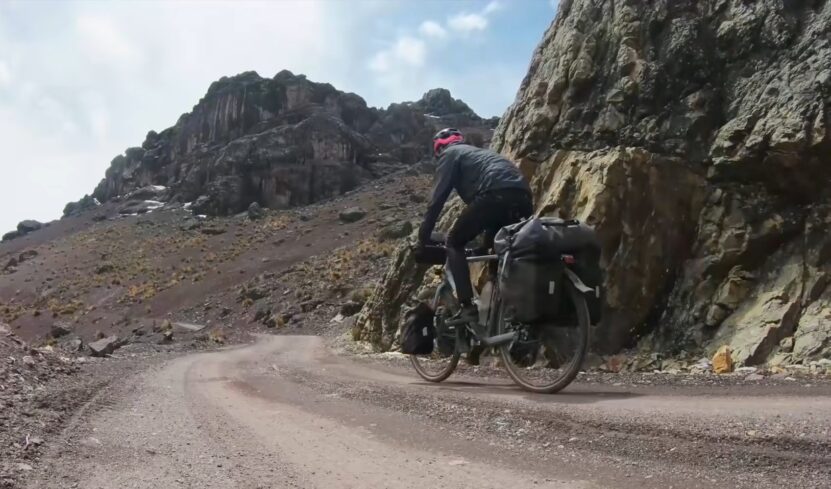
A touring bike is designed for longer rides on paved roads, while a mountain bike is built for off-road trails.
What Is A Touring Bike
A touring bike typically has a more comfortable saddle, plus racks and panniers to carry your gear. It’s also geared for slower speeds, which makes it ideal for longer rides.
What Is A Mountain Bike
A mountain bike, on the other hand, is geared for faster speeds and has suspension shocks to absorb the bumps on the trail.
Geometry
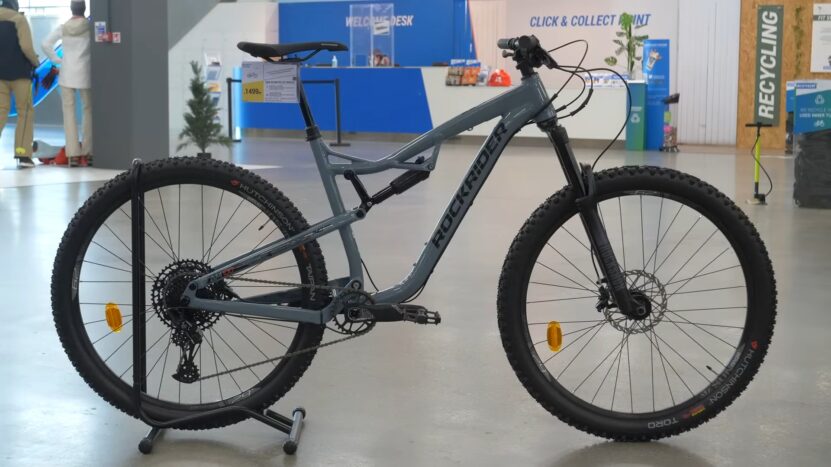
Mountain bikes and touring bikes differ in their geometry, which affects how they ride. Mountain bikes typically have a steeper head tube angle, which makes them more responsive and stable when descending or cornering on rough terrain. Their longer wheelbase also contributes to their stability.
Touring bikes, on the other hand, have a more relaxed head tube angle, which makes them less responsive but more comfortable to ride for long distances. Their shorter wheelbase also makes them more nimble. Ultimately, the geometry of a bike determines how it rides and is an important consideration when choosing a bike.
Mileage
One of the main differences between these two types of bikes is their mileage potential. A mountain bike can typically go farther than a touring bike on a single charge since it is designed for more rugged terrain. If you’re looking to cover a lot of ground on your rides, a mountain bike is the better option.
However, if you’re looking for a more comfortable ride with less effort, a touring bike is the way to go. Touring bikes are built for long distances, and they typically have more relaxed geometry than mountain bikes. This makes them more comfortable riding for extended periods of time.
Handlebars
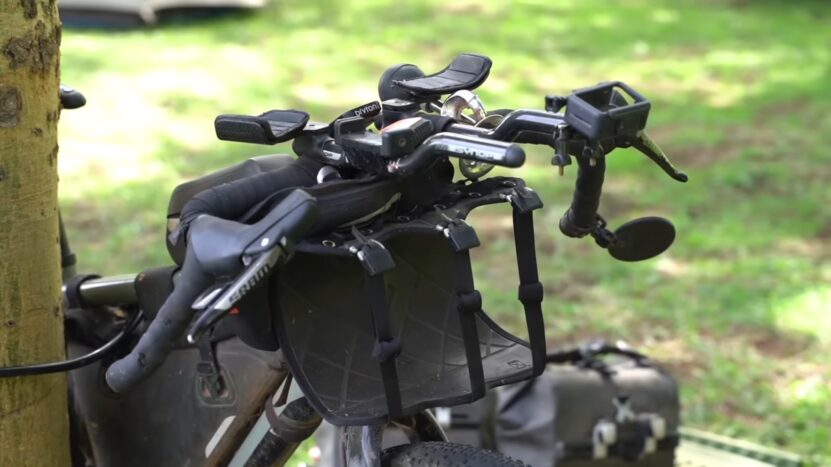
Touring bike handlebars are designed to provide a comfortable, upright position for the cyclist. They are usually wider than mountain bike handlebars and have a curved shape that allows the cyclist to grip them with their hands close together. This position allows the cyclist to easily scan the road ahead for obstacles and hazards.
Mountain bike handlebars are designed for riders who want to be in a more aggressive position while riding. They are usually narrower than touring bike handlebars and have a more squared-off shape that allows the cyclist to grip them with their hands farther apart. This position allows the cyclist to easily control the bike while riding over rough terrain.
For a comfortable, upright position while riding, touring bike handlebars are the right choice for you. For a more aggressive position while riding, mountain bike handlebars are the right choice for you.
Frame
One of the key differences between touring bikes and mountain bikes is the frame. Touring bikes have a more relaxed frame geometry, which makes them more comfortable to ride for long distances. Mountain bikes have a more aggressive frame geometry, which makes them better suited for off-road riding.
Wheels
The wheels on a touring bike are usually wider than those on a mountain bike. This is because touring bikes are designed for riding on pavement, and the wider tires provide more stability and comfort. Touring bike wheels are typically heavier and more durable than mountain bike wheels. They are designed to withstand the extra weight of luggage and supplies. The hubs on touring bike wheels are also typically more robust, which helps to keep the wheel spinning smoothly even when heavily loaded.
Mountain bike wheels are typically narrower, as they are designed for off-road use. Narrower wheels are faster and more agile, but they can also be more unstable on the pavement. Mountain bike wheels are typically lighter and more agile than touring bike wheels. This is important for navigating tight trails and dodging obstacles. The hubs on mountain bike wheels are also typically built for speed, which helps to keep the wheel spinning quickly even when pedaling hard.
Gears
When it comes to gears, there is a big difference between Touring Bikes and Mountain Bikes. A touring bike will typically have 18 or more gears, while a mountain bike will usually have 8 or fewer gears. The reason for this is that touring bikes are designed for riding on paved roads, while mountain bikes are designed for off-road riding. Touring bikes need more gears because they are typically ridden at a slower speed, while mountain bikes need fewer gears because they are often ridden at higher speeds.
Bike Suspension
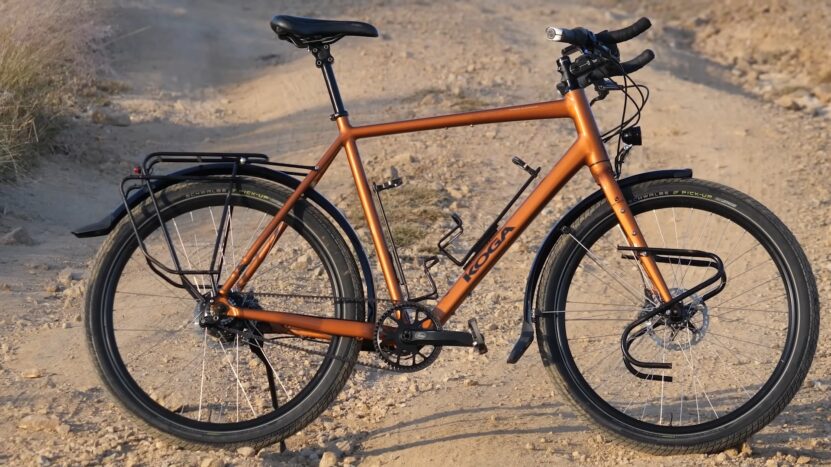
Mountain bike suspensions are typically much more robust than those on touring bikes. This is because mountain biking often involves riding over rough, uneven terrain, which can cause the bike to bounce around and make it difficult to control. A robust suspension system helps to absorb these bumps and keep the rider in control.
Touring bike suspensions, on the other hand, are typically much more subtle. This is because touring bikes are designed for smooth roads, and a robust suspension system would make it difficult to ride on pavement. A subtle suspension system helps to keep the bike stable and prevents it from bouncing around. A bike that can handle rough terrain, a mountain bike is a way to go. For a bike that can handle long distances on smooth roads, a touring bike is the better option.
Dropper Post
A dropper post is a great addition to any mountain bike, but it can also be used on touring bikes. While they both have their own unique benefits, there are some key differences between dropper posts for mountain bikes and those for touring bikes.
Mountain Bike Dropper Posts
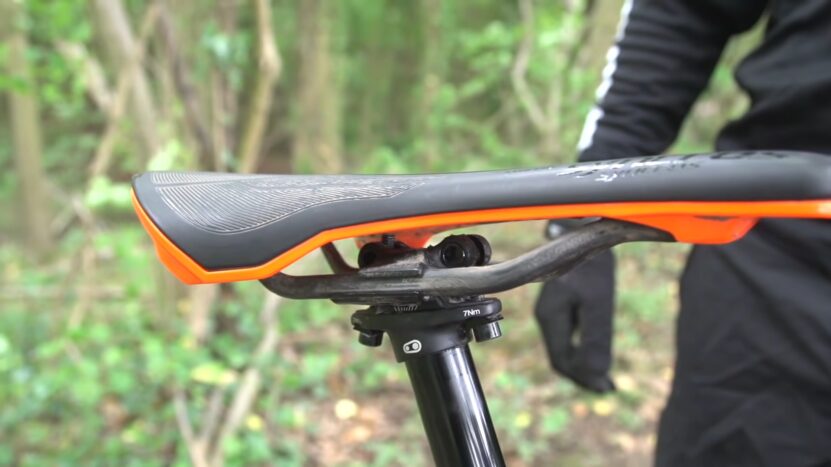
- Typically taller than those for touring bikes
- More robust and durable, designed to withstand the rigors of off-road riding
- It may have additional features such as a remote lever for easy activation
Touring Bike Dropper Posts
- Generally, shorter than mountain bike dropper posts to save weight
- More subtle and understated design so as not to stand out on a touring bike
- It may not have all the bells and whistles of a mountain bike dropper post, but should still be effective in lowering and raising the Seatpost
- Ultimately, it comes down to personal preference and what you plan on using your bike for.
- A dropper post that can handle anything you throw at it, a mountain bike dropper post is the way to go.
If you’re looking for something that is more lightweight and low profile, a touring bike dropper post is a better option. No matter what you choose, a dropper post can be a great addition to any bike and will make your rides much more enjoyable.
Lights
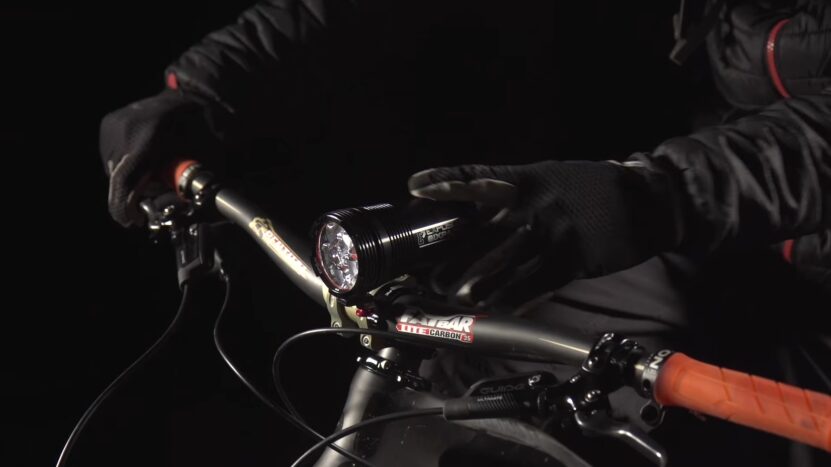
There are a few key differences between touring bikes and mountain bikes when it comes to lights. For one, touring bikes usually have dynamo lighting systems, which means the light is powered by the bike itself as you pedal. This is a great option if you plan on doing a lot of night riding, as it means you won’t have to worry about running out of battery power.
Mountain bikes, on the other hand, usually have battery-powered lights. This can be a downside if you’re planning on doing a lot of night riding, as you’ll need to make sure you have fresh batteries on hand. However, mountain bike lights are often more powerful than touring bike lights, which can be helpful if you’re riding on a particularly dark trail.
Fenders
Although fenders are commonly used on both mountain bikes and touring bikes, they serve different purposes.
Mountain Bike Fenders
Mountain bike fenders are designed to protect the rider from flying debris, such as mud and rocks. They are typically wider than other types of fenders and extend further down the bike’s wheel to deflect as much debris as possible.
Touring Bike Fenders
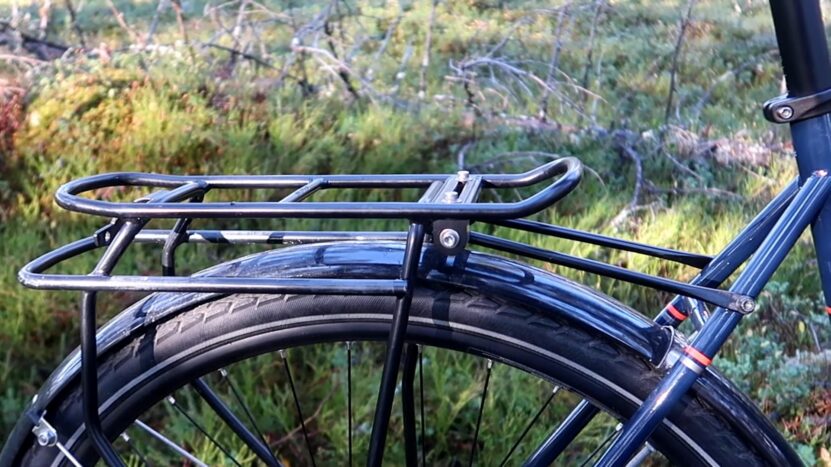
Touring bike fenders are designed to keep the rider and their bicycle dry in wet weather. They are typically narrower than mountain bike fenders and extend only a short distance down the wheel. This allows them to catch more water without interfering with the bike’s handling.
Mountain Bikes
- Built with sturdier materials like steel and heavy-duty aluminum.
- Made for rougher terrain, usually come equipped with tougher tires that are more flat-proof than road bikes.
- Designed to grip onto surfaces better which makes it safer in off-road conditions, but also less efficient on the road.
- Typically heavier than road bikes, making them harder to pedal for extended periods of time.
Touring Bikes
- Built with lighter materials like carbon fiber and titanium.
- Made for longer trips at high speeds when you need a quick burst of energy.
- Designed for aerodynamics which reduces wind resistance allowing riders to go faster with less effort.
- Typically lighter than mountain bikes making them easier to pedal for extended periods of time.
Mountain bikers need a more sturdy frame that can handle rougher terrain whereas tour bikers need a lighter frame that is aerodynamic and efficient on long trips at high speeds.
Touring bike vs Mountain bike 9 Key Differences
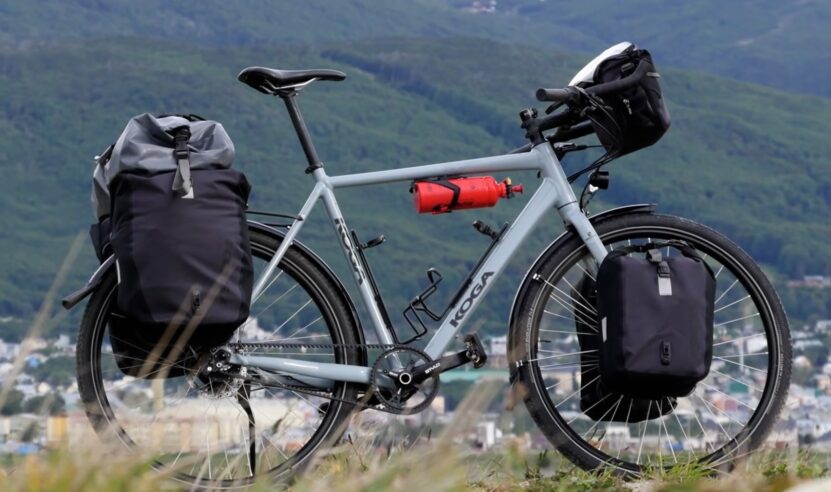
- Mountain bikes come in various styles whereas touring bikes are designed to perform generally at high speeds over long distances.
- A touring bike is typically more expensive than a mountain bike.
- A touring bike has fenders to help keep the rider dry, whereas a mountain bike does not.
- The components on a touring bike are lighter because they will be used for long periods of time over long distances at high speeds. The gearing on these bikes is also different from those of a mountain bike.
- A touring bike is engineered for high speeds over long distances whereas the mountain bike is built more like a workhorse. The mountain bike typically has rugged components to withstand rugged terrain that it might be used for, and its gearing tends to be sturdier in order to accommodate this.
- Mountain bikes are built more like workhorses with heavy-duty components that can handle the wear and tear of long periods of use on tough terrain.
- The gearing on a touring bike is set up for fast training over rough terrain whereas it’s not in a mountain bike.
- A mountain bike typically has knobby treads to grip loose dirt, whereas a touring bike will have fenders to keep the rider dry.
- A mountain bike has a sturdier gear system because it goes over rougher terrain than a touring bike typically would, such as rocks and dirt trails. The gearing on these bikes is typically more rugged in order to accommodate this.
Can A Mountain Bike Be Used For Touring?
Yes, a mountain bike can be used for touring. Many people use mountain bikes for touring because they are durable and able to handle a variety of terrain.
However, there are some considerations to keep in mind when using a mountain bike for touring. For example, you will likely want to have a larger tire than what is typically found on a mountain bike, as this will provide more stability and comfort when riding over long distances.
Additionally, it is important to make sure that your mountain bike is properly tuned and that you have the proper gear for touring. By taking these precautions, you can ensure that your mountain bike is a suitable option for touring.
Are Touring Bikes Faster Than Mountain Bikes?
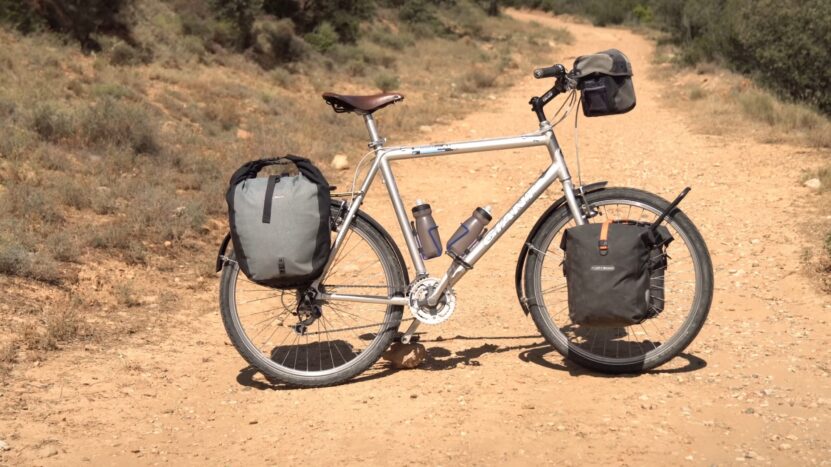
Touring bikes are likely to be faster than mountain bikes, especially on smooth surfaces. This is because touring bikes are designed for speed and efficiency, whereas mountain bikes are designed for off-road use and are less efficient on paved surfaces.
However, there are some mountain bikes that are designed for use on pavement, so it is important to consider the specific bike when making a comparison. Ultimately, the best way to determine which bike is faster is to test them both out on the same terrain.
Conclusion
For a bike to commute on, go on weekend rides with your friends, or do some light touring, then a touring bike is probably the best option for you. For a bike to ride on trails, go mountain biking, or do some serious touring, then a mountain bike is probably the best option for you.

